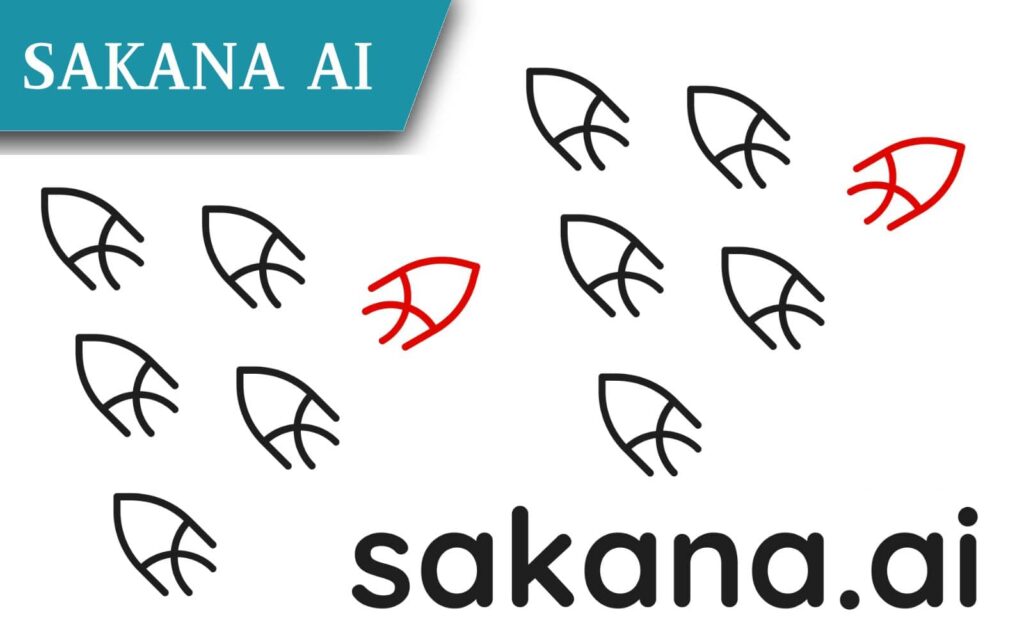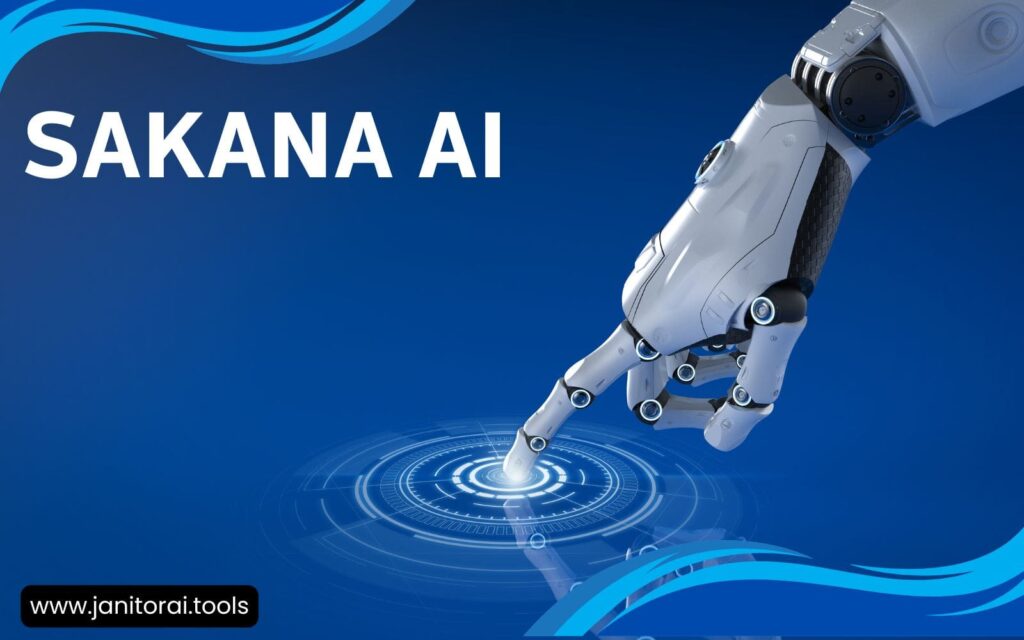Artificial intelligence (AI) is rapidly transforming various industries, and scientific research is no exception. One of the latest advancements in this space is Sakana AI, a cutting-edge tool that is revolutionizing how scientists conduct research and solve complex problems. This blog will explore what Sakana AI is, how it works, its features, benefits, limitations, and much more.
Let’s dive into the world of Sakana AI and discover how it’s changing the landscape of scientific research.

What is Sakana AI?
Sakana AI is an advanced artificial intelligence platform designed to assist scientists, researchers, and analysts. It acts as a digital scientist, capable of analyzing vast amounts of data, generating hypotheses, and even performing experiments in a virtual environment. The goal of Sakana is to accelerate the process of scientific discovery by automating many of the tasks that typically require human intervention.
Whether you’re conducting experiments, analyzing research papers, or solving complex equations, It can help. It’s designed to work in various scientific fields, including biology, chemistry, physics, and more.
How Does Sakana AI Work?
Sakana AI utilizes a combination of machine learning and natural language processing (NLP) technologies. It processes large sets of data and uses AI algorithms to identify patterns, make predictions, and recommend possible solutions.
Here’s a breakdown of how Sakana works:
- Data Input: Users can upload datasets, research papers, or other scientific materials into the system. It is compatible with many formats, making it versatile for different scientific needs.
- Analysis: Sakana AI uses machine learning algorithms to process the data. It can quickly identify patterns, anomalies, and insights that might be difficult for humans to detect.
- Hypothesis Generation: Based on the data, Sakana.AI can generate hypotheses and predict outcomes. It gives users potential solutions or new areas of research to explore.
- Virtual Experiments: It can run simulations and virtual experiments, allowing scientists to test hypotheses without the need for physical labs.
- Reporting: After analysis and experiments, Sakana generates detailed reports. These reports include graphs, charts, and data summaries to help researchers easily understand their findings.
Key Features of Sakana AI
1. Data Analysis
Sakana AI excels at data analysis, capable of handling large and complex datasets. Whether you’re working with DNA sequences, chemical reactions, or climate models, It can help you process and understand the data.

2. Hypothesis Generation
One of the most exciting features of Sakana AI is its ability to generate hypotheses. By analyzing data, the AI suggests potential directions for future research, helping scientists explore new possibilities.
3. Virtual Simulations
It can conduct virtual experiments, allowing scientists to test their hypotheses without the need for physical experiments. This feature is particularly useful in fields like biology and chemistry, where experiments can be time-consuming and expensive.
4. Automated Reporting
After analysis and experimentation, It generates comprehensive reports. These reports are easy to understand and can be customized according to the user’s needs. The AI even provides visual representations of the data for easier interpretation.
5. Collaboration Tools
It includes features that allow researchers to collaborate seamlessly. Multiple users can work on the same project, share data, and communicate in real-time. This makes it an ideal tool for large research teams.
6. Multidisciplinary Support
Sakana AI is designed to work across various scientific disciplines. Whether you’re in physics, chemistry, biology, or engineering, the platform adapts to your specific research needs.
Benefits of Using Sakana AI
1. Faster Research
Sakana AI accelerates the research process by automating data analysis, hypothesis generation, and reporting. Tasks that might take weeks or months can now be completed in a matter of hours or days.
2. Cost-Effective
By using virtual experiments and simulations, researchers can significantly reduce the cost of physical experiments. This makes scientific research more accessible, especially for smaller institutions or startups.
3. Improved Accuracy
AI algorithms can detect patterns and anomalies in data that may be missed by human researchers. This leads to more accurate results and better-informed decisions.

4. Enhanced Collaboration
With built-in collaboration tools, It allows researchers from different parts of the world to work together seamlessly. This promotes knowledge sharing and speeds up the discovery process.
5. Scalability
Sakana AI can handle datasets of all sizes, from small research projects to large-scale studies. This scalability makes it suitable for a wide range of research scenarios.
How to Use Sakana AI
Using Sakana is straightforward. Here’s a step-by-step guide to get you started:
Step 1: Sign Up
First, visit the Official website and create an account. The platform offers different subscription plans based on the size and complexity of your research needs.
Step 2: Upload Data
Once your account is set up, you can start by uploading your data. Sakana AI supports a wide range of file formats, making it easy to import your research materials.
Step 3: Set Research Goals
After uploading your data, define your research goals. This could include identifying patterns, generating hypotheses, or running virtual experiments.
Step 4: Analyze
Let Sakana AI analyze your data. The AI will process it and provide you with insights, patterns, and possible hypotheses.
Step 5: Experiment
If needed, you can run virtual simulations to test your hypotheses. This step is particularly useful in scientific fields where physical experimentation is challenging.
Step 6: Generate Reports
Once your analysis and experiments are complete, It will generate a detailed report. You can customize this report according to your specific needs and share it with your research team.
Limitations of Sakana AI
While Sakana.AI is a powerful tool, it does come with some limitations:
1. Data Dependency
Sakana AI relies heavily on the quality and quantity of the data it processes. Inaccurate or incomplete data can lead to incorrect conclusions.
2. Complex Learning Curve
For beginners, there may be a learning curve when it comes to understanding all the features and functions of Sakana.AI. However, the platform offers tutorials and customer support to help ease the process.
3. Limited in Certain Disciplines
Although Sakana AI supports multiple scientific disciplines, it may not be as effective in areas that require a high level of physical experimentation or manual intervention.

Sakana AI Pricing
It offers competitive pricing for its advanced AI solutions. The company provides various plans to suit different needs. Here is a breakdown of their pricing structure:
- Basic Plan: This plan is ideal for small businesses or startups. It includes essential AI features. The cost is $50 per month.
- Standard Plan: Suitable for medium-sized businesses. It offers more advanced features. The price is $100 per month.
- Premium Plan: Designed for large enterprises. It includes all features and priority support. The cost is $200 per month.
Additional Costs
- Setup Fee: There is a one-time setup fee of $500 for all plans.
- Custom Solutions: For tailored AI solutions, pricing is based on project requirements. Contact Sakana for a quote.
Discounts and Offers
Sakana AI provides discounts for annual subscriptions. You can save up to 20% by choosing a yearly plan. They also offer special rates for educational institutions and non-profits.
Sakana AI vs. Other AI Tools
It stands out from other AI-powered research tools in several ways:
1. Virtual Experiments
While many AI tools focus on data analysis, Sakana AI goes a step further by offering virtual simulations and experiments. This sets it apart from competitors who may not have such advanced capabilities.
2. Multidisciplinary Support
Unlike some AI tools that cater to specific fields,It supports a wide range of disciplines, making it more versatile.
Read More: Humbot AI
3. Collaboration Features
Sakana AI’s collaboration tools allow for seamless teamwork, which is not a common feature in many other AI platforms. This is particularly useful for large-scale research projects.
The Future of Sakana AI
The future of Sakana AI looks bright. As artificial intelligence continues to evolve, we can expect Sakana to become even more advanced. Features like predictive modeling, real-time data analysis, and integration with laboratory hardware could be introduced in the future.

Sakana AI has the potential to become an essential tool in the scientific community, enabling researchers to make discoveries faster and more efficiently than ever before.
FAQs
What is Sakana AI used for?
Sakana AI is an AI-powered platform designed to help scientists and researchers analyze data, generate hypotheses, and conduct virtual experiments. It streamlines the research process, making it faster and more efficient.
Can Sakana AI be used in multiple scientific fields?
Yes, It supports a wide range of scientific disciplines, including biology, chemistry, physics, and engineering. Its flexibility makes it suitable for various research needs.
Does Sakana require a lot of data to work?
It works best with large, high-quality datasets. While it can analyze smaller datasets, the accuracy and insights improve with more comprehensive data.
Is Sakana AI easy to use for beginners?
Sakana AI has a learning curve, especially for users new to AI tools. However, it offers tutorials and support to help users get started quickly.
How does Sakana AI help with collaboration?
It includes built-in collaboration tools, allowing research teams to share data, communicate, and work together in real-time, making it easier to collaborate on large projects.
Conclusion
Sakana AI is a revolutionary tool that is transforming the way scientists and researchers work. Its ability to analyze data, generate hypotheses, run virtual experiments, and produce detailed reports makes it a powerful ally in the research process. While it does come with some limitations, the benefits far outweigh them.
Whether you’re a scientist, researcher, or data analyst, Sakana AI can help you streamline your workflow and achieve your research goals faster and more accurately. With its flexible pricing plans and easy-to-use interface, It is accessible to institutions of all sizes.
In the ever-evolving world of science, Sakana is truly a game-changer.
